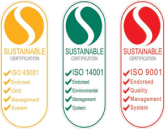In marine construction and dredging projects, maintaining water quality is a critical responsibility. Turbidity controls are essential tools that reduce the spread of suspended sediments, ensuring compliance with environmental regulations and protecting marine ecosystems.
At Polaris Marine Group, turbidity control is a standard component of our environmentally responsible project approach.
What Is Turbidity?
Turbidity refers to the cloudiness or haziness in water caused by particles suspended in the water column, such as silt, clay, algae, and other materials. These particles scatter light and reduce visibility, impacting aquatic life and water quality.
In construction or dredging projects, increased turbidity can result from disturbed seabeds, runoff, and displaced sediment, making it a major environmental concern.
Why Turbidity Control Matters in Marine Projects
Turbidity isn’t just a visual issue — it has serious implications for aquatic ecosystems. Suspended particles can clog the gills of fish, smother seagrass beds, and reduce light penetration, which affects photosynthesis in marine flora.
For these reasons, strict turbidity limits are often enforced by regulatory bodies. Failure to manage turbidity effectively can lead to fines, project delays, and long-term damage to marine environments.
Polaris Marine Group's Approach to Turbidity Controls
At Polaris Marine Group, we implement a tailored turbidity management plan for every relevant project. Whether we’re engaged in dredging, marine construction, or shoreline development, our experienced team evaluates site conditions, project scope, and environmental risk to determine the most effective control measures.
We often deploy floating turbidity curtains to contain disturbed sediment and prevent it from spreading to adjacent areas. These curtains are anchored securely and monitored throughout the project to ensure continued performance. In some cases, we may use silt fences, sediment basins, or hydrographic monitoring systems to complement physical barriers and keep turbidity within acceptable limits.
Monitoring and Compliance
Real-time monitoring is crucial for ensuring turbidity controls are functioning properly. Polaris Marine Group uses electronic turbidity meters to measure water clarity throughout the day.
These readings allow our team to make immediate adjustments to control methods if sediment levels begin to exceed thresholds. Monitoring data also supports compliance reporting and gives clients confidence in the environmental integrity of their project.
Experience Across a Range of Marine Environments
Our team has delivered turbidity control solutions for projects in ports, harbours, estuaries, and coastal developments. Whether it’s working near sensitive marine habitats or managing the interface between urban runoff and natural waterways, Polaris Marine Group brings the same diligence to every job.
We understand the complexity of working in different marine zones and adjust our controls accordingly.
Integrated Environmental Solutions
Turbidity control is just one aspect of our broader commitment to environmental responsibility. We incorporate sustainable work practices across all Polaris Marine Group operations. From oil spill mitigation to heritage preservation, our marine projects are designed with a light environmental footprint.
Clients who partner with us benefit not only from technical expertise, but also from responsible project delivery aligned with community and regulatory expectations.
Speak To Us Today
If you’re planning a marine construction, dredging, or waterfront development project, talk to Polaris Marine Group about turbidity controls.
Contact us today and we’ll help you navigate the environmental requirements while delivering a clean, compliant, and high-performance marine outcome.


